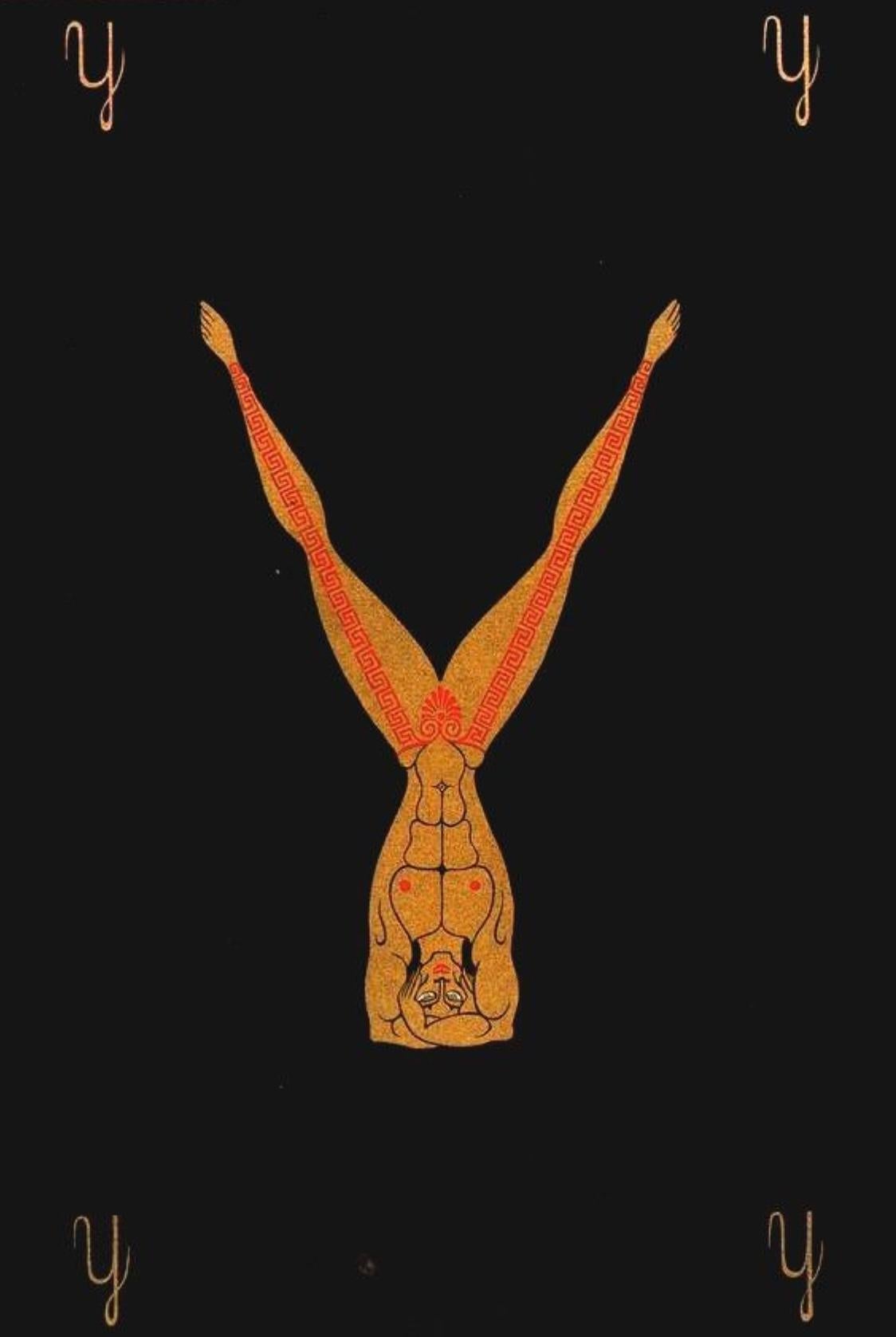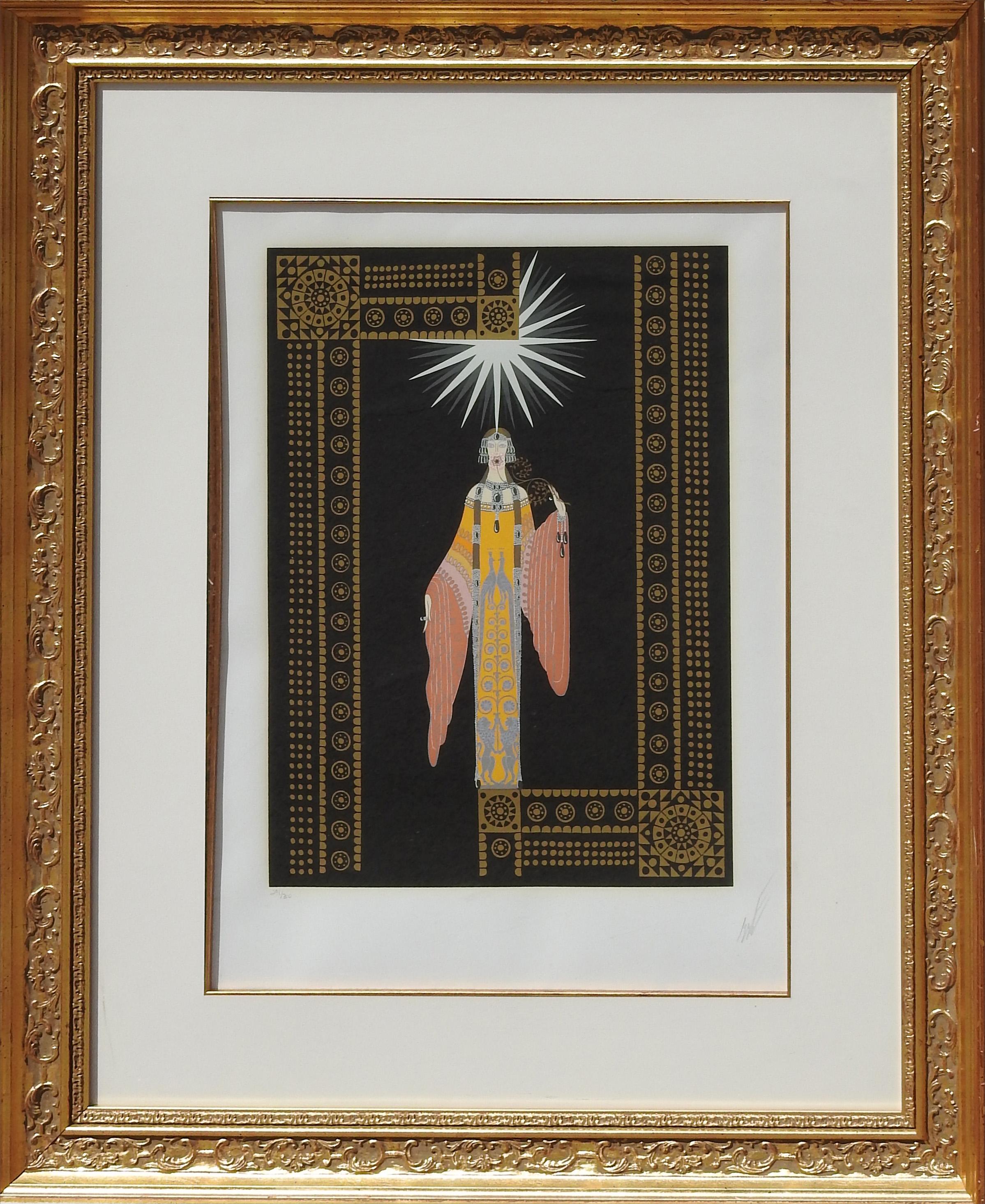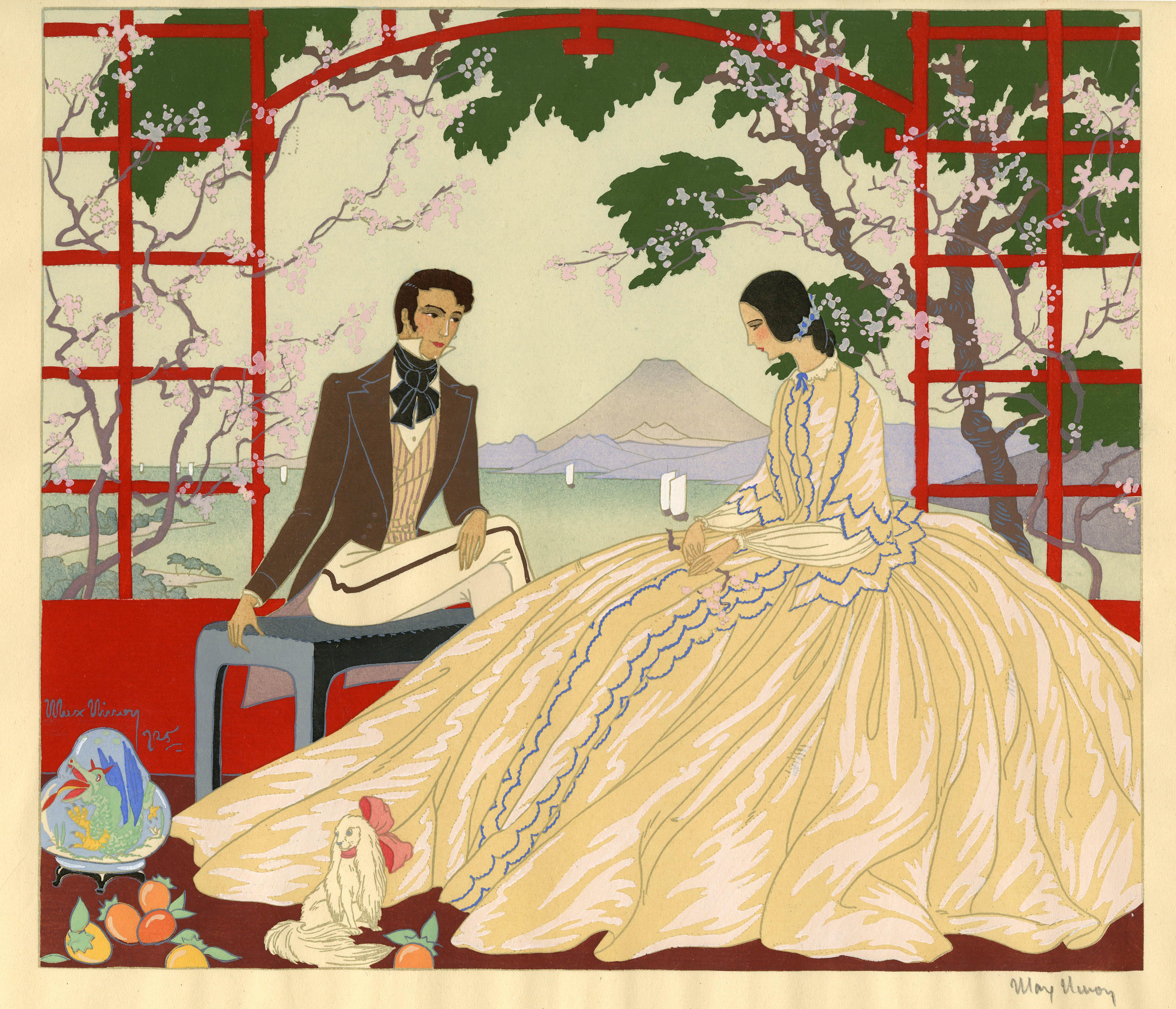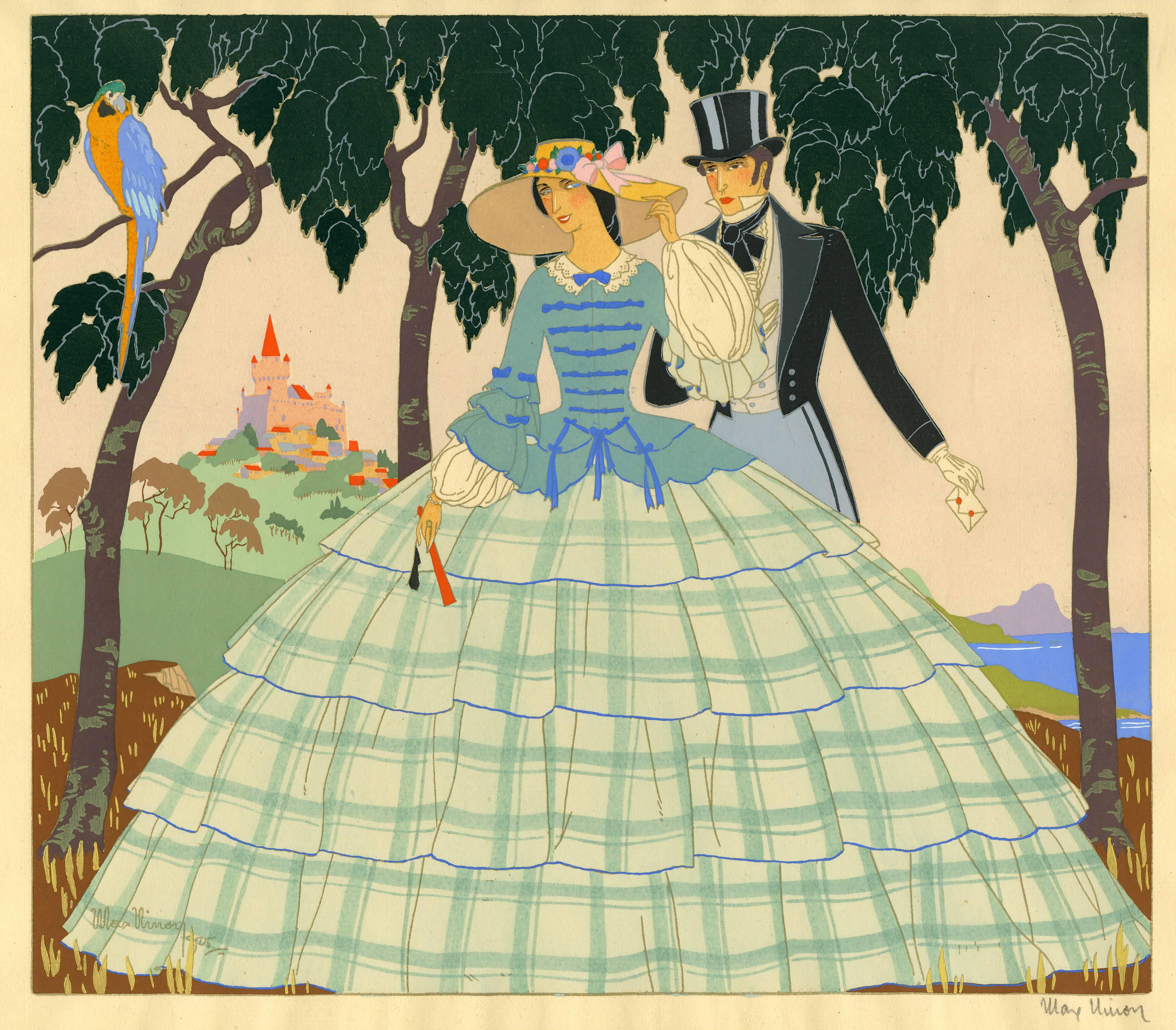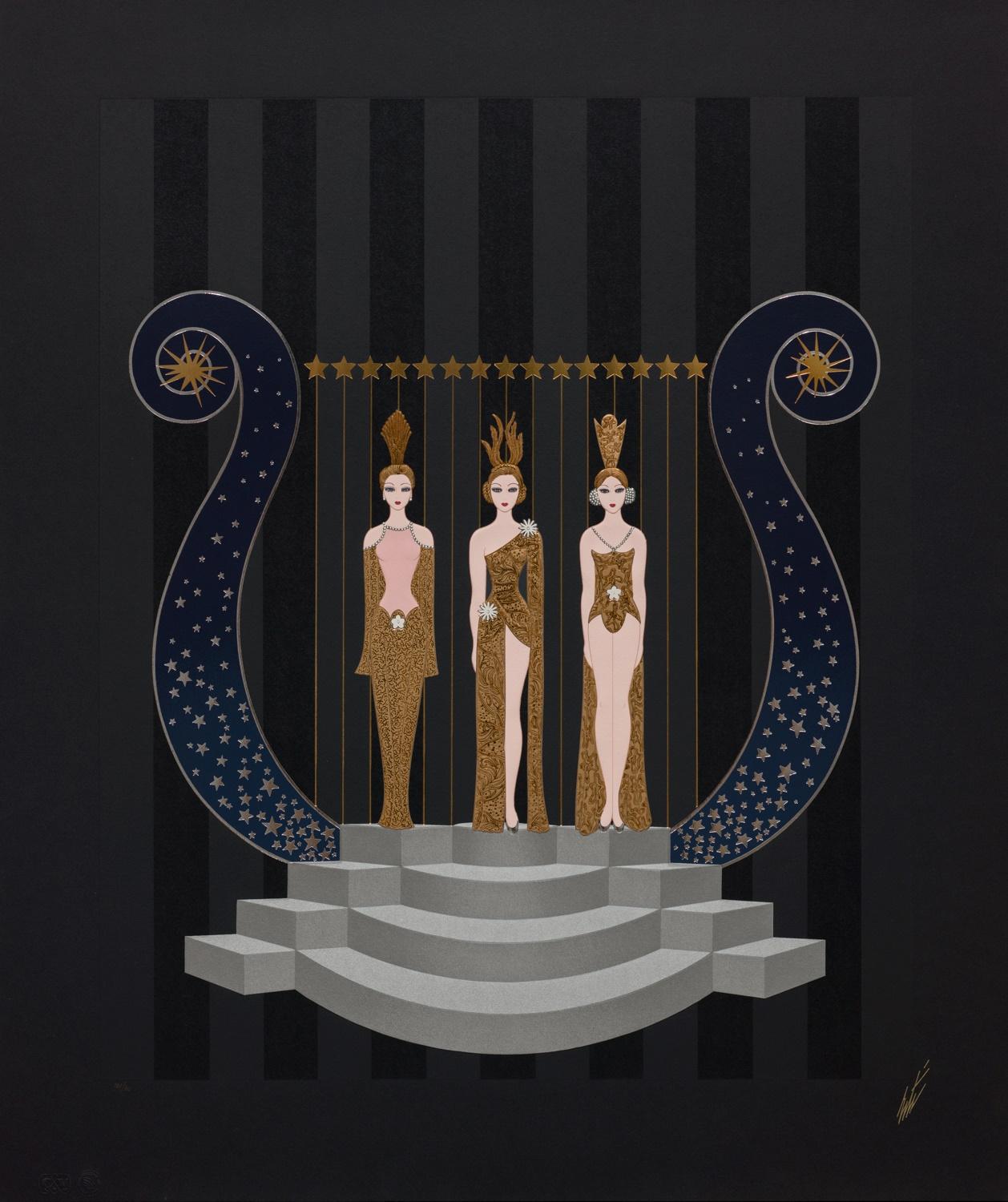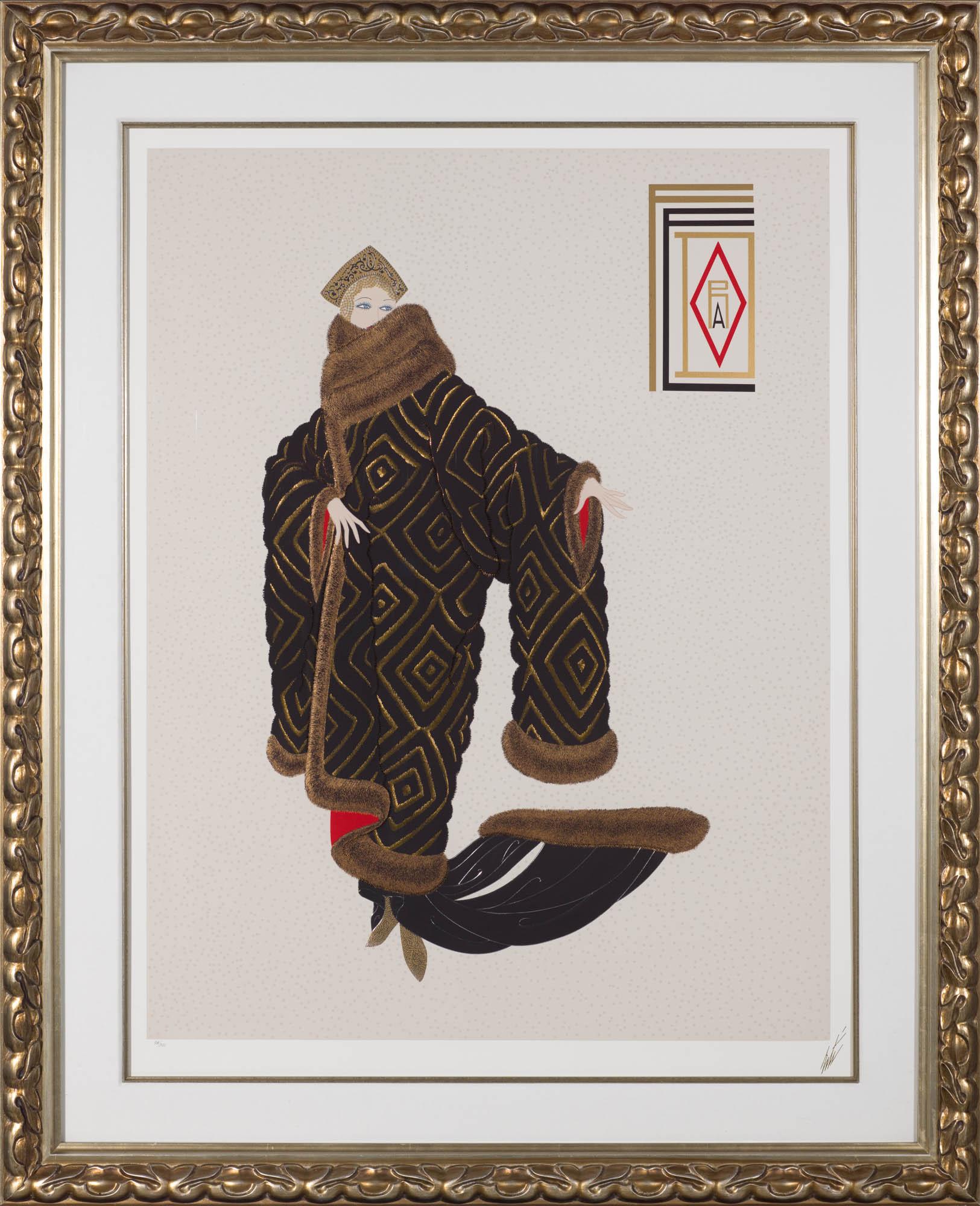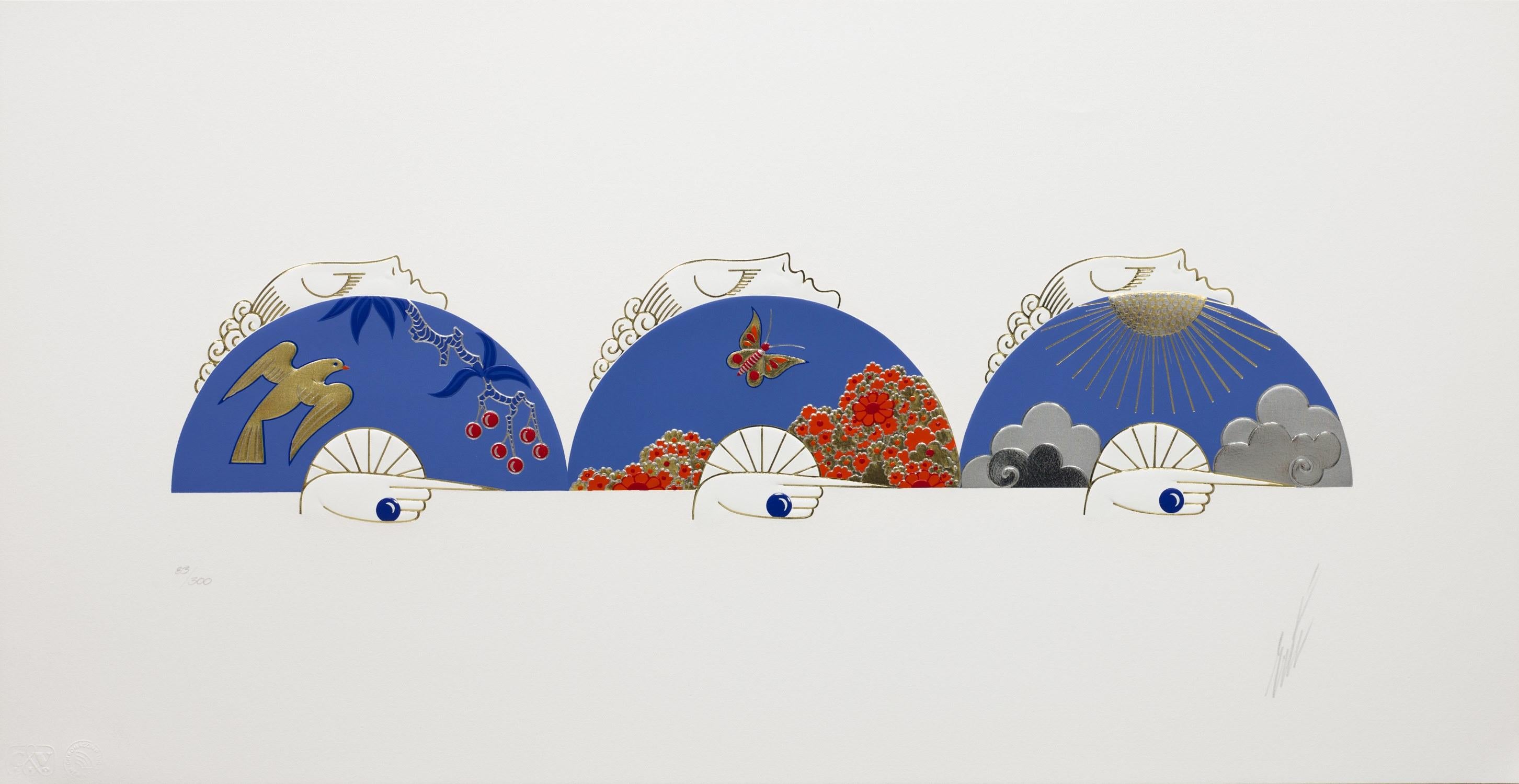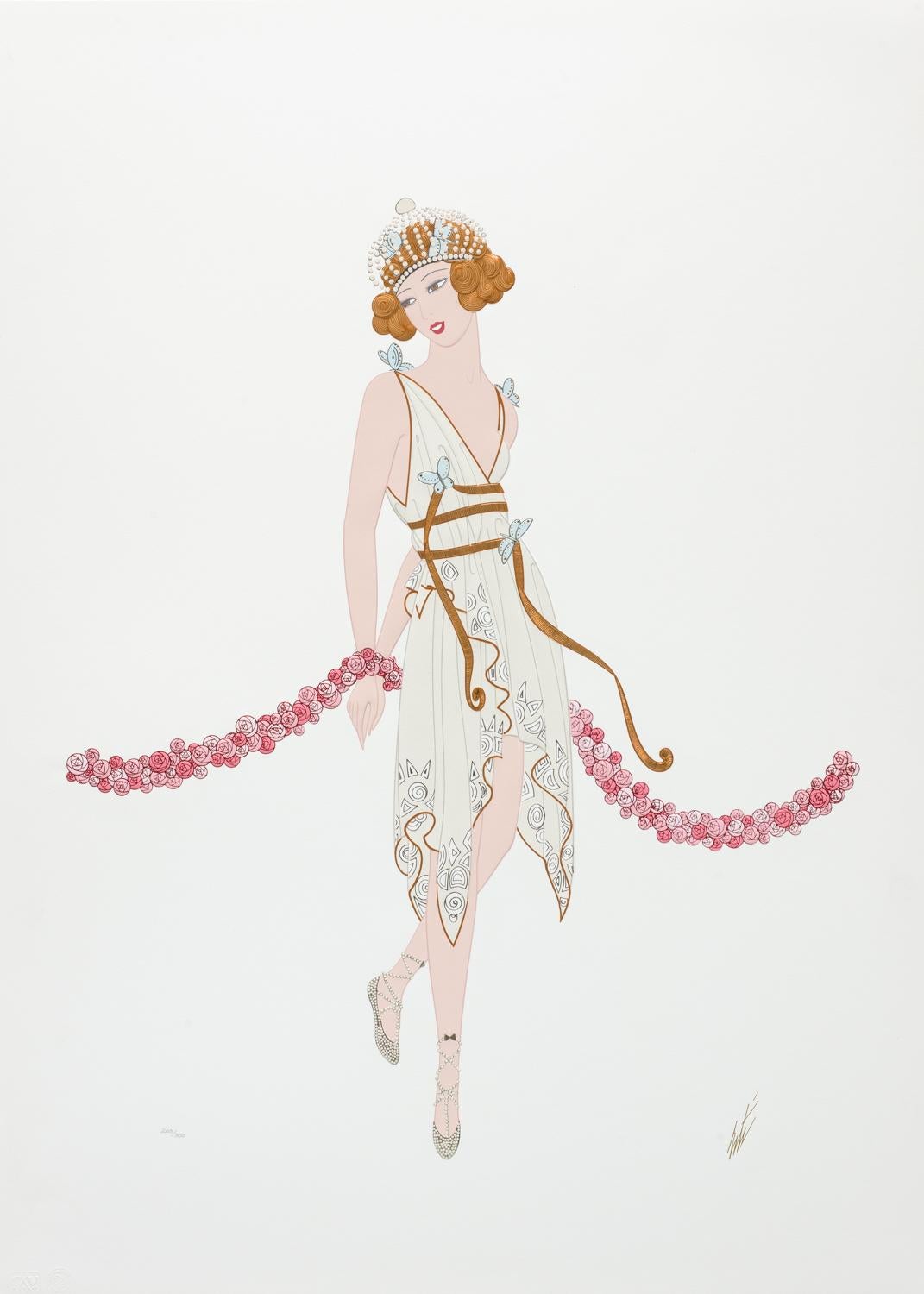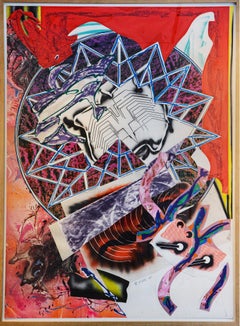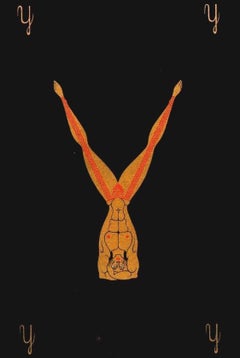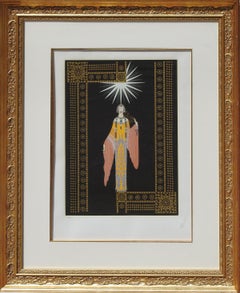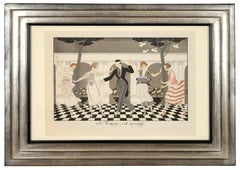
George Barbier, L'Amour est aveugle, fashion lithograph, 1920
View Similar Items
Want more images or videos?
Request additional images or videos from the seller
1 of 2
George BarbierGeorge Barbier, L'Amour est aveugle, fashion lithograph, 19201920
1920
About the Item
- Creator:George Barbier (1882 - 1932, French)
- Creation Year:1920
- Dimensions:Height: 15.56 in (39.5 cm)Width: 20.87 in (53 cm)
- Medium:
- Movement & Style:
- Period:
- Condition:
- Gallery Location:London, GB
- Reference Number:Seller: 943051stDibs: LU4702002893
About the Seller
5.0
Recognized Seller
These prestigious sellers are industry leaders and represent the highest echelon for item quality and design.
Established in 2014
1stDibs seller since 2014
85 sales on 1stDibs
Typical response time: 19 hours
Associations
International Fine Print Dealers Association
More From This SellerView All
- Ahab, from The Waves SeriesBy Frank StellaLocated in London, GBScreenprint, lithograph and linocut in colours with collage, marbling and hand-colouring, 1989, on T. H. Saunders and Somerset papers, signed and dated ‘88’ in pencil, numbered 'AP I...Category
1980s Abstract Abstract Prints
MaterialsLithograph, Screen
- DespairiaBy Frank StellaLocated in London, GBOver a period of four years, Stella created a body of prints whose titles all came from ‘The Dictionary of Imaginary Places’ by Alberto Mangual and Gianni Guadalupi. Each work from t...Category
1990s Abstract Abstract Prints
MaterialsEngraving, Mezzotint, Etching, Aquatint, Lithograph, Screen
$49,915 - The Waves: SquidBy Frank StellaLocated in London, GBSilkscreen, lithograph, linoleum block with hand-colouring, marbling and collage, 1989, on T. H. Saunders and Somerset paper, signed, dated and numbered from the edition of 60, publi...Category
1980s Abstract Abstract Prints
MaterialsLithograph, Screen
- Chicken 'N Dumplings, from Campbell’s Soup IIBy Andy WarholLocated in London, GBScreenprint in colours, 1969, on wove paper, signed in ball-point pen and numbered with a rubber stamp, verso, 91 from the edition of 250 (there were also 26 artist's proofs lettered...Category
1960s Pop Art Still-life Prints
MaterialsScreen
- RiallaroBy Frank StellaLocated in London, GBEtching, aquatint, collagraph, lithograph and screenprint in colours, 1995, from Frank Stella's series Imaginary Places. Titled after an imaginary archipelago in John Macmillan Brown...Category
Late 20th Century Abstract Prints
MaterialsScreen
$34,557 - For the Blue Sons of the AirBy Sam FrancisLocated in London, GBScreenprint in colours, 1990, on wove paper, signed in pencil, numbered from the edition of 150, published by American Indian Heritage Foundation, Falls Church, Virginia, 135.6 x 81....Category
1990s Abstract Prints and Multiples
MaterialsScreen
You May Also Like
- Letter "Y" from the Alphabet SuiteBy Erte - Romain de TirtoffLocated in Saugatuck, MIErte hand signed and numbered limited edition lithograph and screen print. From the Alphabet Suite. Framed dimensions are 26" W x 31" T. Near Mint condi...Category
1970s Art Deco Figurative Prints
MaterialsScreen, Lithograph
- Letter "U" from the Alphabet SuiteBy Erte - Romain de TirtoffLocated in Saugatuck, MIErte hand signed and numbered limited edition lithograph and screen print. From the Alphabet Suite. Framed dimensions are 26" W x 31" T. Near Mint condi...Category
1970s Art Deco Figurative Prints
MaterialsScreen, Lithograph
$1,916 Sale Price20% Off - "La Princesse Lointaine", Erte, Original Serigraph numbered 291/300, Art DecoBy ErtéLocated in Dallas, TX"La Princesse Lointaine" is a serigraph created in 1984 by Erté. Classic art deco piece with a gaudy princess in yellow and pink with a star above ...Category
1980s Art Deco Figurative Prints
MaterialsScreen, Lithograph
- Au JaponBy Victor Max NinonLocated in Fairlawn, OHAu Japon Pochoir (Stencil Print), 1925 Signed by the artist in pencil lower right (see photo) Signed in the image lower left (see photo) Stamped verso: Made in France Note: The artist won a gold medal in Paris in 1925 for his porchoirs Condition: excellent Image size: 11 1/2 x 13 inches Sheet size: 20 x 25 3/4 inches The artist is Italian, Vittorio Accornero de Testa, working in Paris. The image combines Art Deco and Japonism, two of the most famous styles of the period of the 1920's. Condition: Excellent, never matted or framed Victor Max Ninon (Vittorio Accornero de Testa, Italian, 1896-1982) Biography Vittorio Accornero de Testa was born in Casale Monferrato in 1896. He completed his first studies at the "Leardi" institute, but was forced to interrupt them due to the war events of the First World War . At 19 he was second lieutenant of the Alpine troops and in 1916 he took one of the first pilot's licenses. During the war he knows the bitterness of shooting down in air combat (for which he is decorated), but also the good fortune to stay alive, albeit with a disability. His art blossomed in the postwar period, first signing his works simply Ninon and then, probably at the suggestion of a French publisher, under the pseudonym of "Victor Max Ninon" (Victor and Max indicate strength and masculinity, Ninon boyhood) .In 1919 and 1924 he made illustrations for theGiornalino della Domenica , also together with his first wife Edina Altara , for Ardita and La Lettura . In 1923 he won the cover competition organized by the magazine El Hogar of Buenos Aires and in 1925 with his pochoirs he imposed himself in Paris at the international exhibition of modern decorative and industrial arts , obtaining a gold medal. In the same year he made two covers for the US magazine The Smart Set . In the 1920s he made numerous series of art deco style postcards for the Milanese publishing house Degami . On June 4, 1929, aGenoa embarks on the Conte Grande together with his wife Edina Altara , for New York . The two stayed in the American metropolis for a few months: in this period Accornero worked on the creation of theatrical sets and created some covers for Country Life magazine . Accornero gets awards and prizes, but the great economic crisis of the time and the nostalgia for Italy convince the two to return to their homeland, where they resume their activity as illustrators. In 1934 Accornero moved to Milan, separated amicably from his wife and continued to dedicate himself to the illustration of children's books, abandoning the pseudonym Victor Max Ninon. It illustrates about 60 books, from the fables of Andersen , Perrault and Grimm , to the tales of Poe , as well as the famous Pinocchio and Cuore published by Mondadori, Mursia, Hoepli, Martello. Several books illustrated by Accornero have been published in French, Spanish, German and English. In addition to the periodicals already mentioned, he collaborates on the first edition of the Encyclopedia of Boys , Mondadori, and with the Italian magazines Lidel , Il Secolo XX, The Italian Illustration , Fantasies of Italy , The Woman , Cordelia , For You Lady , Grace , Metropolis , La Domenica del Corriere , The Corriere dei Piccoli . In 1936 enters the world of cinema, creating sets and costumes for Wedding Vagabonde of Guido Brignone and The White Squadron of Augustus Genina . From 1935 to 1950 he also devoted himself to the theater, taking care of sets and costumes for numerous operettas, ballets and performances at the Scala in Milan and for the Milanese theaters Manzoni, Lirico and Olympia. Stages Marcello di Giordano, Nina pazza d'amore by Paisiello, I cantori di Nurimberga by Wagner, La Bohème by Puccini and other works. For this activity he is also cited in the Theater encyclopedia. In the 1940s and 1950s he wrote and illustrated six books for children for Mondadori: Tomaso (1944), Giacomino (1949), Tomaso Cacciatore (1950), Zio Stefano (1950), In Campagna che delizia! (1953), Tomaso, dear Tomaso (1955). His illustrations of Perrault's Tales published in those years by Hoepli are famous. His art in the fifties evolves towards hyperrealism . There are many personal exhibitions in Italy and abroad, including those at the Gallerie Gussoni (1959) and Bolzani (1963 and 1966) in Milan and Walcheturm (1962) in Zurich. Eminent critics praise his work, from Orio Vergani to Enrico Piceni, from Reto Roedel to De Chirico himself. On the Domenica del Corriere , the journalist, writer and painter Dino Buzzati...Category
1920s Art Deco Figurative Prints
MaterialsScreen
- En EspagneBy Victor Max NinonLocated in Fairlawn, OHEn Espagne Pochoir (silk screen) printed in colors Signed by the artist in pencil lower right The artist won a gold medal in Paris in 1925 for his pochoirs Condition: Excellent Image size: 11-1/2 x 13" Sheet size: 19 1/2 x 24 3/4"; The artist won a gold medal in Paris in 1925 for his porchoirs The artist is Italian, Vittorio Accornero de Testa, working in Paris. The image combines Art Deco and Japonism, two of the most famous styles of the period of the 1920's. Biography Vittorio Accornero de Testa was born in Casale Monferrato in 1896. He completed his first studies at the "Leardi" institute, but was forced to interrupt them due to the war events of the First World War . At 19 he was second lieutenant of the Alpine troops and in 1916 he took one of the first pilot's licenses. During the war he knows the bitterness of shooting down in air combat (for which he is decorated), but also the good fortune to stay alive, albeit with a disability. His art blossomed in the postwar period, first signing his works simply Ninon and then, probably at the suggestion of a French publisher, under the pseudonym of "Victor Max Ninon" (Victor and Max indicate strength and masculinity, Ninon boyhood) .In 1919 and 1924 he made illustrations for theGiornalino della Domenica , also together with his first wife Edina Altara , for Ardita and La Lettura . In 1923 he won the cover competition organized by the magazine El Hogar of Buenos Aires and in 1925 with his pochoirs he imposed himself in Paris at the international exhibition of modern decorative and industrial arts , obtaining a gold medal. In the same year he made two covers for the US magazine The Smart Set . In the 1920s he made numerous series of art deco style postcards for the Milanese publishing house Degami . On June 4, 1929, aGenoa embarks on the Conte Grande together with his wife Edina Altara , for New York . The two stayed in the American metropolis for a few months: in this period Accornero worked on the creation of theatrical sets and created some covers for Country Life magazine . Accornero gets awards and prizes, but the great economic crisis of the time and the nostalgia for Italy convince the two to return to their homeland, where they resume their activity as illustrators. In 1934 Accornero moved to Milan, separated amicably from his wife and continued to dedicate himself to the illustration of children's books, abandoning the pseudonym Victor Max Ninon. It illustrates about 60 books, from the fables of Andersen , Perrault and Grimm , to the tales of Poe , as well as the famous Pinocchio and Cuore published by Mondadori, Mursia, Hoepli, Martello. Several books illustrated by Accornero have been published in French, Spanish, German and English. In addition to the periodicals already mentioned, he collaborates on the first edition of the Encyclopedia of Boys , Mondadori, and with the Italian magazines Lidel , Il Secolo XX, The Italian Illustration , Fantasies of Italy , The Woman , Cordelia , For You Lady , Grace , Metropolis , La Domenica del Corriere , The Corriere dei Piccoli . In 1936 enters the world of cinema, creating sets and costumes for Wedding Vagabonde of Guido Brignone and The White Squadron of Augustus Genina . From 1935 to 1950 he also devoted himself to the theater, taking care of sets and costumes for numerous operettas, ballets and performances at the Scala in Milan and for the Milanese theaters Manzoni, Lirico and Olympia. Stages Marcello di Giordano, Nina pazza d'amore by Paisiello, I cantori di Nurimberga by Wagner, La Bohème by Puccini and other works. For this activity he is also cited in the Theater encyclopedia. In the 1940s and 1950s he wrote and illustrated six books for children for Mondadori: Tomaso (1944), Giacomino (1949), Tomaso Cacciatore (1950), Zio Stefano (1950), In Campagna che delizia! (1953), Tomaso, dear Tomaso (1955). His illustrations of Perrault's Tales published in those years by Hoepli are famous. His art in the fifties evolves towards hyperrealism . There are many personal exhibitions in Italy and abroad, including those at the Gallerie Gussoni (1959) and Bolzani (1963 and 1966) in Milan and Walcheturm (1962) in Zurich. Eminent critics praise his work, from Orio Vergani to Enrico Piceni, from Reto Roedel to De Chirico himself. On the Domenica del Corriere , the journalist, writer and painter Dino Buzzati...Category
1920s Art Deco Figurative Prints
MaterialsScreen
- Art Deco 1925 Signed Limited Edition Screen PrintBy Michael KniginLocated in Rochester Hills, MIArt Deco 1925 1980 Silkscreen Paper size 33½" × 21"inches Signed in pencil and marked 234/300 Michael Knigin was born in 1942 in Brooklyn, NY. He attended and graduated from Tyler S...Category
1980s Art Deco Figurative Prints
MaterialsScreen
